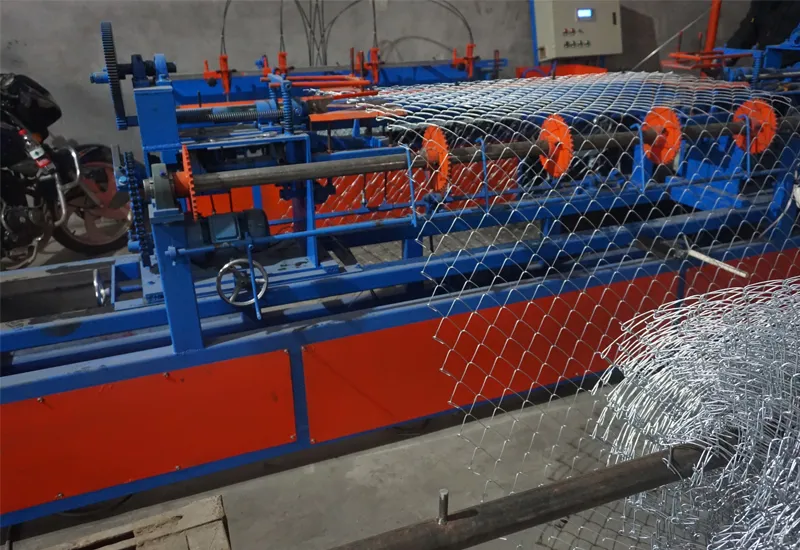
- Afrikaans
- Albanian
- Arabic
- Armenian
- Azerbaijani
- Basque
- Belarusian
- Bengali
- Bosnian
- Bulgarian
- Croatian
- Czech
- Danish
- Dutch
- English
- Esperanto
- Estonian
- Finnish
- French
- Galician
- Georgian
- German
- Greek
- hawaiian
- Hindi
- Hungarian
- Indonesian
- irish
- Italian
- Lao
- Latvian
- Lithuanian
- Luxembourgish
- Macedonian
- Maltese
- Myanmar
- Norwegian
- Polish
- Portuguese
- Romanian
- Russian
- Serbian
- Slovak
- Somali
- Spanish
- Swedish
- Thai
- Turkish
- Turkmen
- Vietnamese
Pro . 07, 2024 16:35 Back to list
barbed wire strand
The Versatility and Significance of Barbed Wire Strand
Barbed wire strand, an intricate yet functional invention, has become synonymous with security, boundary definition, and agricultural practices. This seemingly simple product, consisting of twisted wires with sharp protrusions, serves a multitude of purposes across various fields. From farms to military installations, its development has revolutionized how we handle perimeters and livestock management.
Historical Context
The inception of barbed wire dates back to the late 19th century, primarily attributed to Joseph Glidden’s patent in 1874. His design, which featured two wires twisted together with barbs at intervals, marked a significant advancement in fencing technology. Prior to this innovation, farmers and ranchers relied on wooden fences, which were costly and labor-intensive. Barbed wire provided a more affordable alternative that could be more easily transported and installed. As a result, it played a critical role in the expansion of the American West, helping to define property lines and protect crops and livestock.
Composition and Design
Barbed wire strands are typically made of steel, which provides strength and durability. The barbs themselves are usually made from galvanized wire to prevent rusting and ensure longevity. The configuration of barbed wire strands can vary; they can be single-stranded or multi-stranded, with the spacing and size of the barbs also customizable based on the intended application. For instance, some variations use longer or sharper barbs for heightened security, making it a deterrent for intruders.
Applications Across Industries
In agriculture, barbed wire serves as an effective means of containing livestock. Cattle, horses, and other farm animals can be kept within designated areas, preventing them from straying onto roads or neighboring properties. This not only protects the animals but also ensures public safety by reducing the chances of livestock-related accidents.
Beyond livestock management, barbed wire is widely utilized in commercial security. It is a common sight atop fences surrounding commercial properties, warehouses, and military bases. The intimidating appearance and potential injury from the barbs act as a deterrent to potential trespassers. In war zones and conflict areas, barbed wire becomes a crucial element of fortifications, creating barricades to protect troops and vital installations.
barbed wire strand

Environmental and Social Considerations
While barbed wire offers a range of benefits, its use is not without controversy. In some environmental contexts, barbed wire can pose a risk to wildlife. Animals can become entangled in the strands, leading to injury or death. Consequently, certain regions have seen movements towards more wildlife-friendly fencing solutions that consider both land use and ecological impacts. By innovating designs and using alternative materials, many farmers and landowners strive to balance agricultural needs with wildlife preservation.
Moreover, the presence of barbed wire can evoke feelings of oppression in societal contexts. In some areas, it is associated with militarized zones or places of confinement, which can lead to negative perceptions and emotional responses. The same fencing that secures a farm can also symbolize division and exclusion in other contexts, reminding us of the dual nature of such a ubiquitous tool.
Innovation and Future Trends
In recent years, the demographic of barbed wire users has expanded with the advent of technology. New materials and smart fencing systems are being developed, combining traditional barbed wire with sensors and alarms to enhance security. This technology-driven approach aims to provide a more integrated defensive solution for both agricultural and security applications.
Furthermore, as sustainability becomes more critical in all industries, there is a growing emphasis on producing eco-friendly barbed wire options. These advancements could include using recycled materials or developing biodegradable coatings, thereby addressing both the demand for security and the need for environmental responsibility.
Conclusion
Barbed wire strand remains a pertinent symbol of human ingenuity and practicality. Its multifaceted applications span across agriculture, security, and military use, showcasing its critical role in modern society. However, it also invites us to reflect on its implications for wildlife and social dynamics. As we move forward, balancing innovation with environmental and social awareness will be essential in ensuring that this tool serves us well while respecting the ecosystems and communities that coexist with its presence.
-
Shop Galvanized Horse Panels for Sale | Durable & Secure Fencing
NewsAug.29,2025
-
Wholesale T Posts: Bulk Metal & Steel T Posts for Sale
NewsAug.28,2025
-
Comprehensive Guide to Wire Mesh Solutions: Security, Durability, and Customization
NewsAug.24,2025
-
Comprehensive Guide to Welded Fencing Solutions: Durability, Security, and Style
NewsAug.24,2025
-
Comprehensive Guide to Livestock Fence Panels: Safety and Efficiency for Your Animals
NewsAug.24,2025
-
Comprehensive Guide to Temporary Fencing Solutions: From Construction Sites to Events
NewsAug.24,2025









